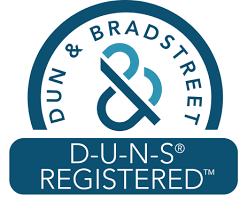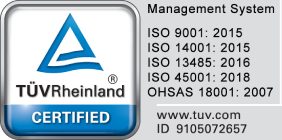Hello, this is Gordon Styles, the founder and CEO of Star Rapid. I’ve been involved in rapid prototyping and new product development for over 35 years and I’m delighted to welcome you back to another exciting installment of Serious Engineering.
Today we’re going to talk about rapid prototyping, and we’re going to do so rapidly. Ever since humans started making stuff – and then tried to make new and improved stuff – there’s been a need to first create models of an idea before subjecting that idea to testing and modification. This was true of the first early machines and it’s still true today.
Prototypes are used for design evolution, functional testing and certification, as proof-of-concept, for crowdfunding campaigns and as bridges to full production.
Today the emphasis is on “rapid”, turning a concept into a physical object as quickly as possible while maintaining high standards for dimensional accuracy, durability and appearance. For the best results we recommend 5 prototyping methods for most projects. They are CNC machining, vacuum casting and three plastic 3D printing methods: SLA, FDM and MJF.
We only suggest using plastic 3D printing for rapid prototypes. Although metal printing can indeed make prototypes – and very good ones – it’s a fundamentally different engineering and design challenge that’s not especially rapid and it’s much more expensive than most developers would want. So here we go.
1. CNC Machining
Many people don’t realize that CNC machining is an ideal prototyping method for the right project. It’s fast, highly accurate and very versatile because it works with almost any solid material. There are also no limitations on volume, so one part can be made just as easily as one thousand.
CNC machining is best used to make strong mechanical parts that are fully-functional and with precise tolerances, making it more expensive than some other methods. It’s not ideal for large enclosures or other hollow shapes because that requires too much material removal. For enclosures, consider vacuum casting instead.
2. Polyurethane Vacuum Casting or VC
Vacuum casting, or VC, uses a solid master pattern as a model of the desired finished part. This pattern can be made from any material but it’s often a plastic 3D printed part.
Liquid silicone rubber is then poured around this pattern and solidified to form a casting mold. When the mold is cut open and the pattern removed, a hollow cavity remains in the mirror image of the original. This cavity can now be filled with liquid resins that mimic the look and feel of common injection molded plastics.
VC is great for making near-production quality plastic parts that look and perform like PIM without the need for expensive metal tools. The VC molds can last up to about 20 copies or so, making this a great way to create enclosures and other semi-hollow forms in small quantities. The surface texture has high fidelity to the original, and parts can later be painted, sanded or machined for more finishing options.
Stereolithography or SLA
This process uses a vat of UV-sensitive liquid inside a chamber with a moveable build platform. Hundreds or thousands of separate 2D slices of a 3D CAD drawing are projected with UV light into the vat as the platform is slowly raised, thereby selectively curing layer upon layer to form the finished part.
SLA is fast and versatile and there are many new resins to choose from that offer different cosmetic and mechanical properties. The surface finish is excellent but the parts are typically not very strong. Parts are also hygroscopic in nature, which means they absorb humidity over a period of time.
Due to the exceptional surface finish it is the preferred process for visual models. These can be easily post processed/painted as well.
Parts must be designed with support structures and carefully oriented on the build plate to maximize space utilization. Also, the part size is limited to the size of the chamber. Typical resolution for SLA can range from 35 to 120 microns.
Fused Deposition Modeling or FDM
This is the 3D printing system most people are familiar with. It uses a filament of plastic, such as PLA, ABS, or other varieties of engineering plastics like Peek, Ultem, etc., that’s extruded through a heated nozzle where it’s melted. This melt is applied in multiple layers to print a part on a build plate.
FDM is one of the least expensive additive manufacturing methods and is perfectly fine for making proof-of-concept models as FDM printers are available as desktop versions and the material are relatively cheap.
Parts are mechanically strong but they may need additional finishing because the resolution is usually poor. However, support structures are needed in FDM, so designing and printing can be done very fast and in a small space. Desktop FDM is often used in small workshops because it is safe and consumes little power. There are industrial FDM printers as well.
Multi-Jet Fusion or MJF
This is a type of binder jet printing. Inside of a heated chamber, powdered plastic substrate is laid down on a print bed. A spraying wand passes over this bed, depositing minute droplets of a binding liquid laid down in the pattern for that specific layer. These droplets are then cured with infrared, forming the layer. More powder is applied and the process repeats to complete the build.
There are several advantages to MJF. First, parts are self-supporting within the powder bed. 2nd, there is little risk of thermal deformation of the part. 3rd, unused powder can be recycled so there is little waste. And 4th, parts can be oriented to fill the entire build volume for maximum efficiency.
This is an industrial process and requires controlled conditions, so it’s definitely not a DIY solution. But MJF is becoming more popular as a true production volume application for 3D printing technology.
Subscribe to our Newsletter for the latest news, updates and offers.




Star Rapid Manufacturing, 2017. All Rights Reserved.